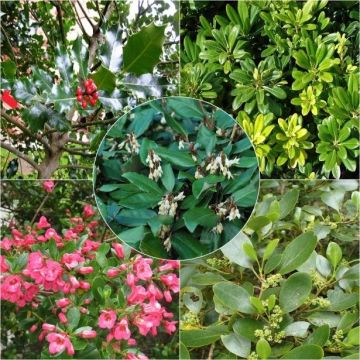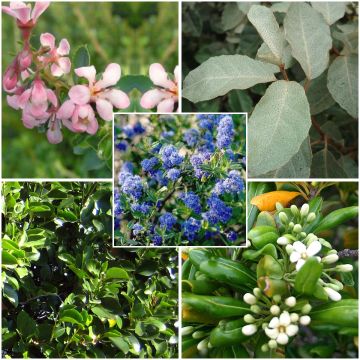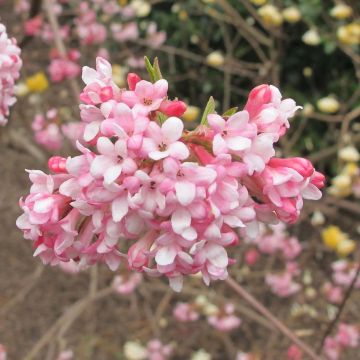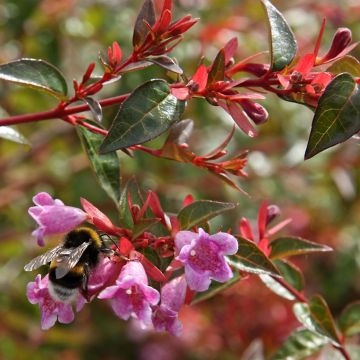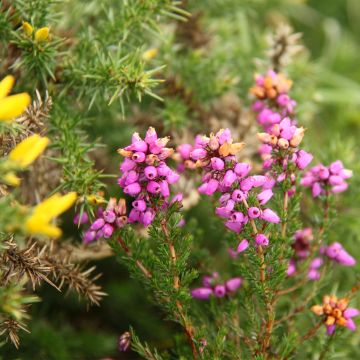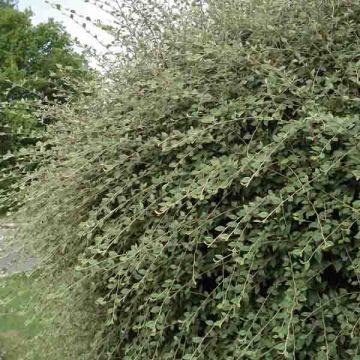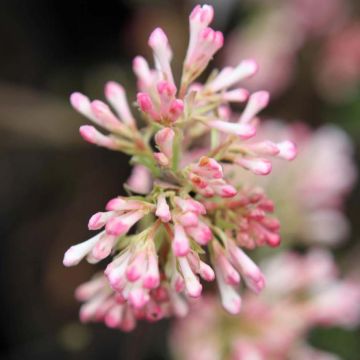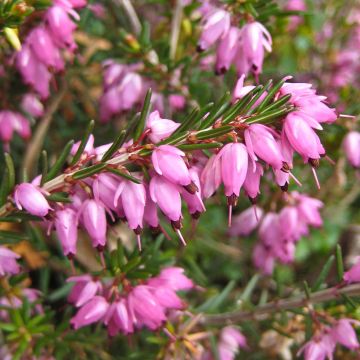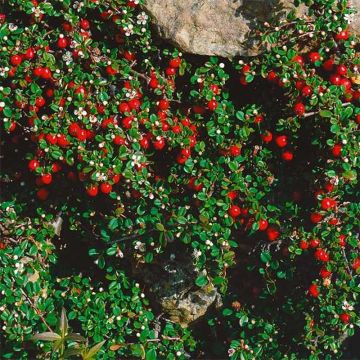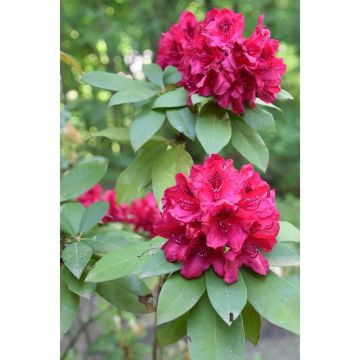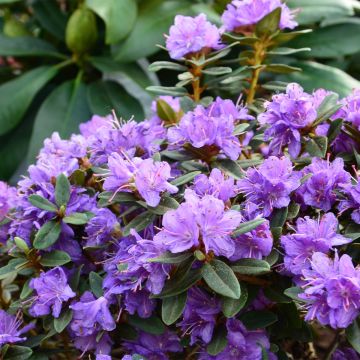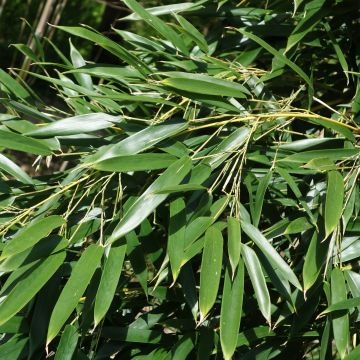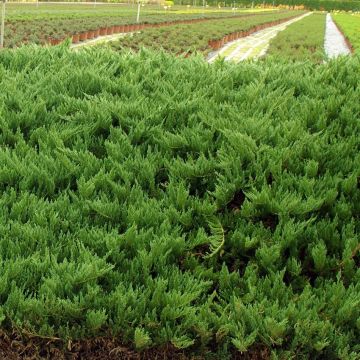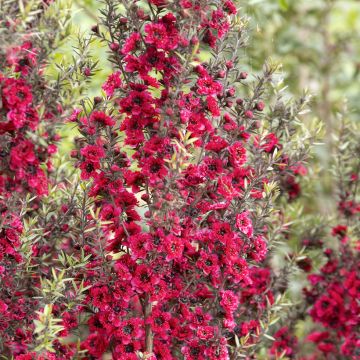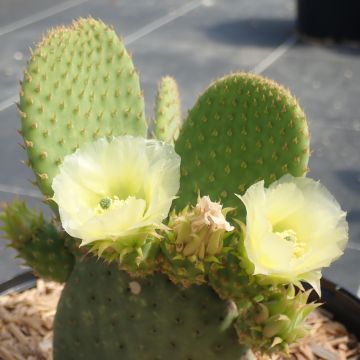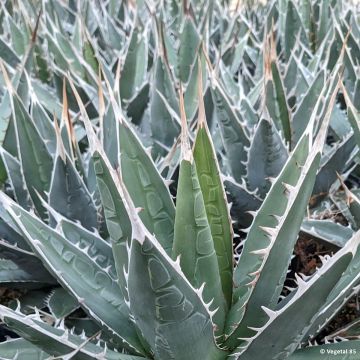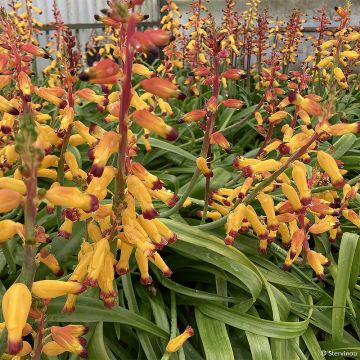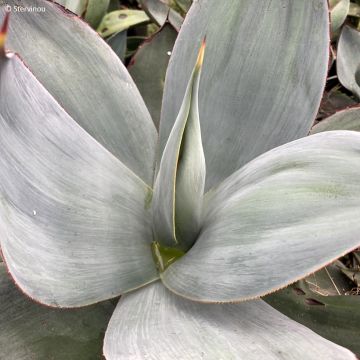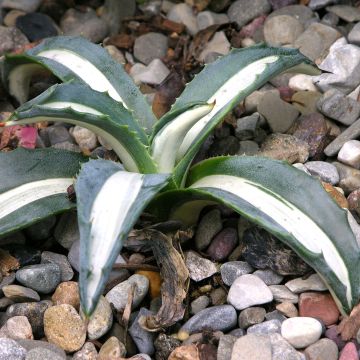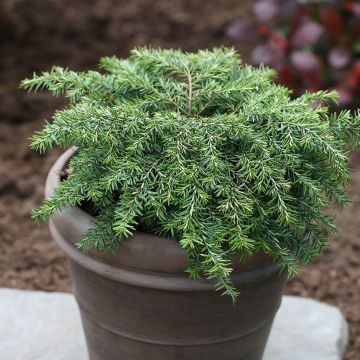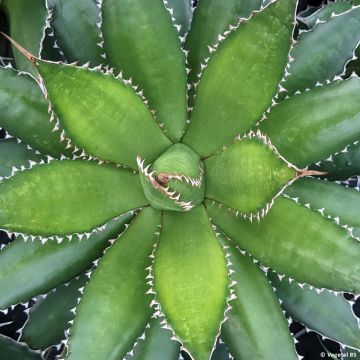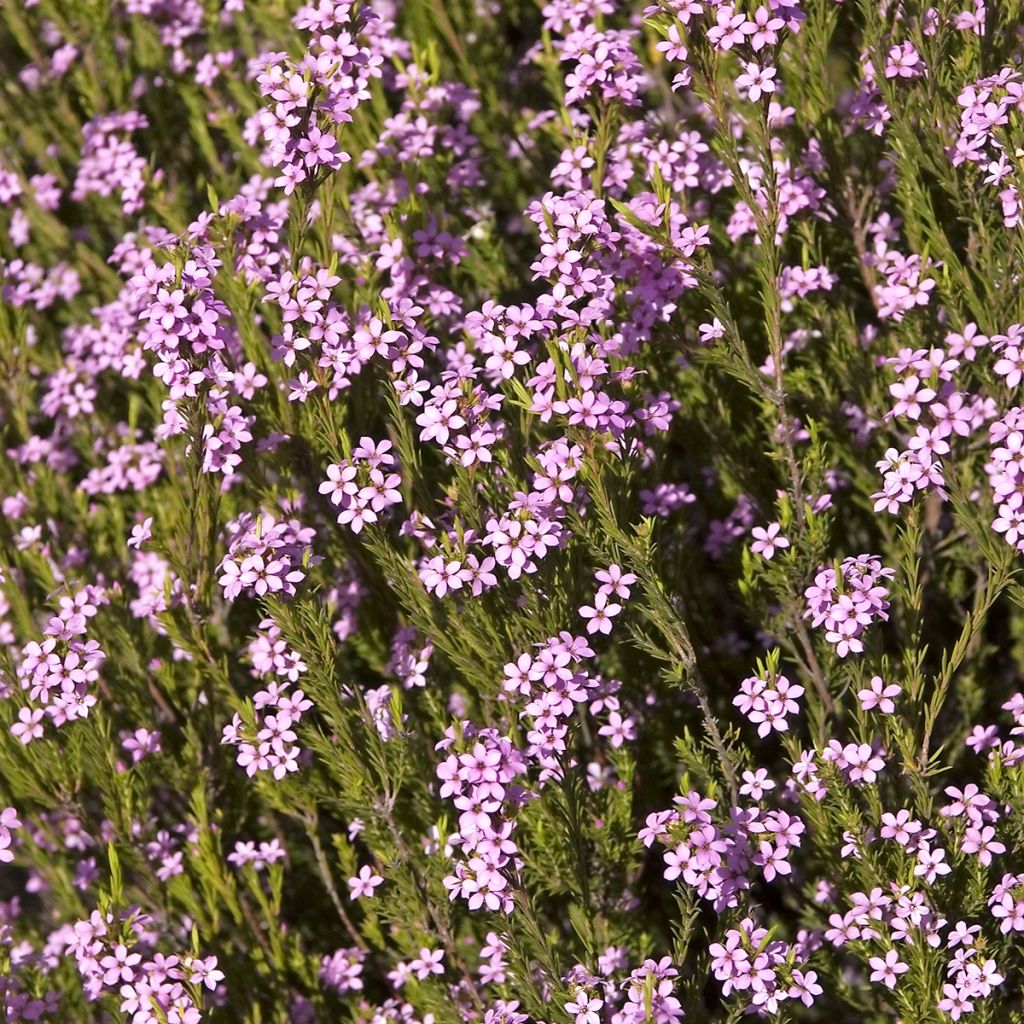

Coleonema pulchrum - Buisson confetti
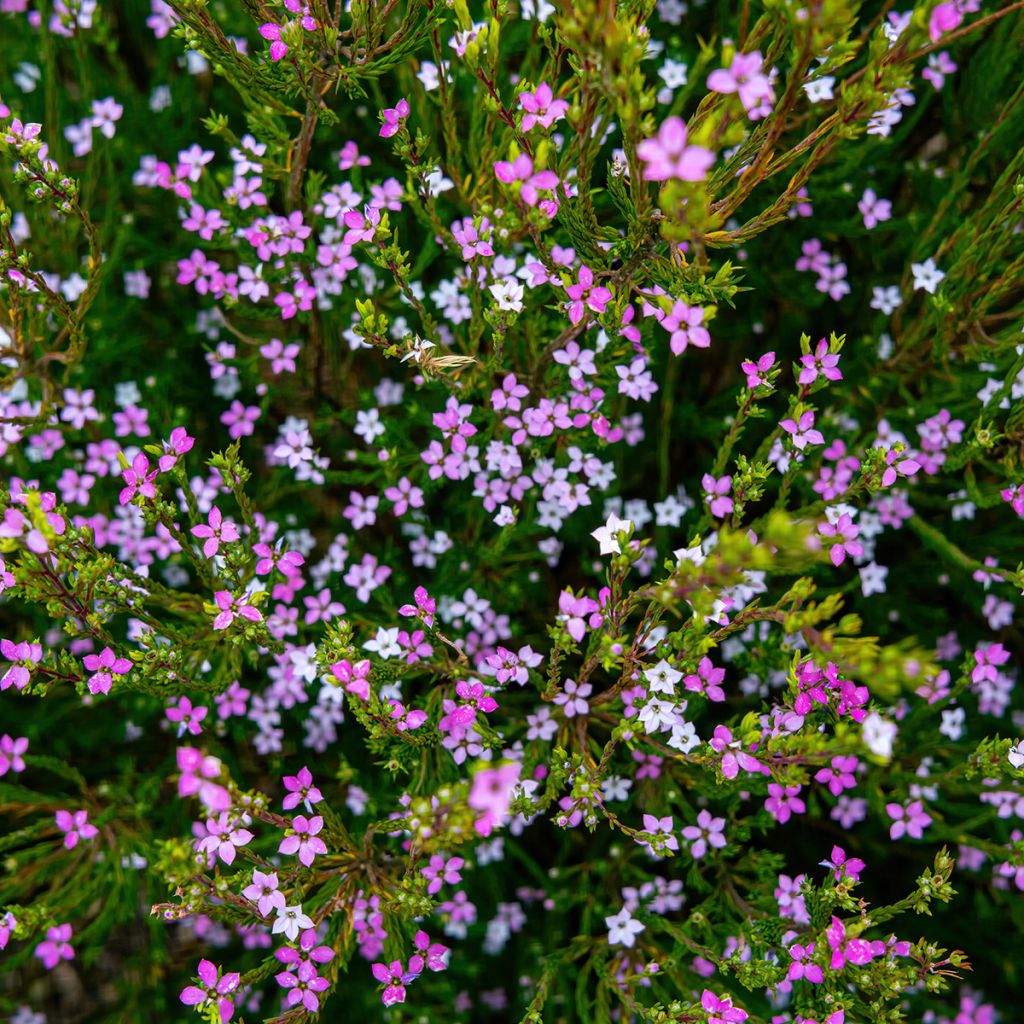

Coleonema pulchrum - Buisson confetti
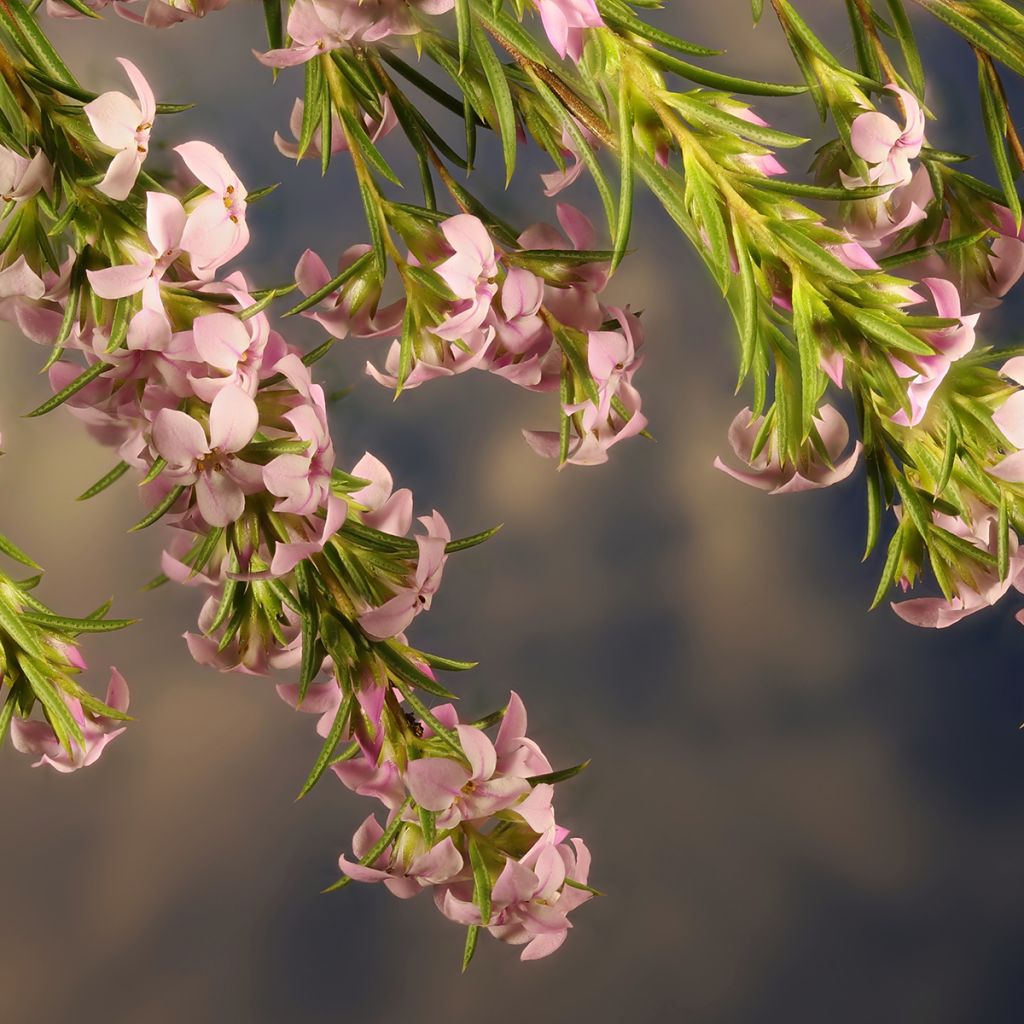

Coleonema pulchrum - Buisson confetti
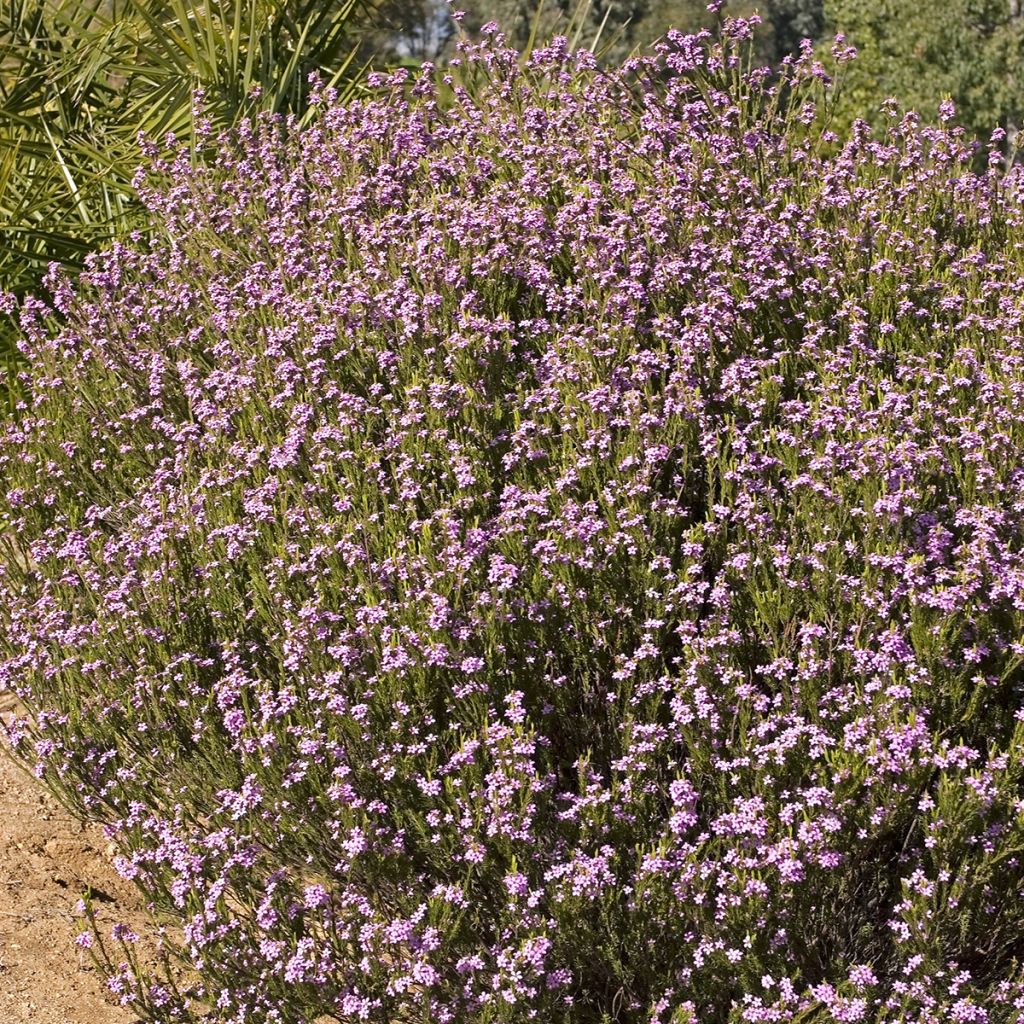

Coleonema pulchrum - Buisson confetti
Coleonema pulchrum
Coleonema pulchrum
Confetti bush
Why not try an alternative variety in stock?
View all →This plant carries a 24 months recovery warranty
More information
We guarantee the quality of our plants for a full growing cycle, and will replace at our expense any plant that fails to recover under normal climatic and planting conditions.
From €5.90 for pickup delivery and €6.90 for home delivery
Express home delivery from €8.90.
Does this plant fit my garden?
Set up your Plantfit profile →
Description
Coleonema pulchrum is nicknamed the Confetti Bush, or even Pink Breath of Heaven on its native South African shores. It is covered with tiny pale-pink flowers from the end of winter. Often confused with Diosma hirsuta 'Pink Fountain', to which it is botanically very similar, this bush has the advantage of being slightly more cold-resistant and better able to tolerate limestone soils. A little taller than its cousin, with a more upright habit, it has fine light green foliage that is pleasantly aromatic when crushed. It is a very pretty plant for a seaside garden or a dry garden. In colder regions, plant in a large pot to adorn a patio or balcony during the summer. Store the pot indoors over winter.
Coleonema pulchrum is a shrubby plant in the Rutaceae family, just like lemon trees. The genus Coleonema only has 8 species, among which C. pulchrum and C. pulchellum are considered distinct or synonymous, depending on the sources. The confetti bush is native to the Cape region in South Africa, particularly the southern coasts. It prefers light, well-drained soil, slightly acidic to slightly limestone. A mature specimen with a well-established root system will tolerate summer drought very well and withstand temperatures down to -7 to -9°C (19.4 to 15.8°F). This moderately fast-growing shrub has a bushy, upright, slightly spreading habit. It develops a low-branching stem, reaching a height of between 80 cm (32in) and 1m (3ft) (up to 1.5m (5ft) by the seaside) and a spread of 70 to 90 cm (27 to 35in). Its slender, flexible, brown branches bear light green acidic foliage on the young shoots, which darkens with time. The very fine leaves, measuring 5 to 7 mm (0.2 to 0.3 in) in length, are glandular and aromatic. When crushed, they release a spicy fragrance. They have no petioles and are arranged alternately. Flowering can begin in February, depending on the climate. It lasts for about 4 months. The star-shaped, nectar-rich flowers are no more than 7 to 8mm (0.3 in) in diameter, but they are countless. Each flower consists of 5 petals. Their candy pink colour gradually fades to a soft pink, or even white, towards the end of the season. They are followed by the formation of green, aromatic fruits with 5 chambers. Each chamber contains 1 small black seed.
Coleonema pulchrum is a graceful plant that is perfect in seaside gardens or to enhance the landscape of a dry garden. It also works well in a large rocky area. It can be planted with Mediterranean plants such as cistus, rosemary, lavender, thyme, or even Teucrium 'Azureum'. It can also be planted in a small evergreen hedge, accompanied by a bushy ceanothus ('Italian Skies', 'Concha', 'Puget Blue', 'Skylark'), Leptospermum, or even red-flowering callistemons (Callistemon rigidus), other South African plants with exotic charm. It will make a beautiful plant for a slightly heated orangery or veranda.
Report an error about the product description
Plant habit
Flowering
Foliage
Botanical data
Coleonema
pulchrum
Rutaceae
Confetti bush
South Africa
Other Shrubs A to Z
Planting and care
Coleonema pulchrum can only be grown outside in warm regions, where winter temperatures are mild and frosts are short-lived. It will thrive in light, well-drained soil, even sandy or rocky, slightly acidic to slightly alkaline soil. It tolerates sea spray very well. Plant it after the last frosts. It will flourish in full sun or partial shade. An adult specimen can withstand short frosts of around -7 to -9°C (19.4 to 15.8°F). Once well rooted, the bush will no longer require watering in summer. It belongs to Mediterranean climates so will require some water from autumn to spring. Coleonema is sensitive to phytophthora, a pathogenic fungus that develops in soils that are both warm and humid: avoid excessive watering in summer and mulch the base to protect it from excessive heat.
In cold regions, it will be essential to cultivate it in a large pot to store it during the winter, in a bright but unheated room.
To shape it, you can lightly prune the stems after flowering, which will encourage the plant to branch out.
Cultivation in pots:
Provide good drainage at the bottom of the pot. Use a light substrate, enriched with leaf compost, coarse sand, and add a little slow-release fertiliser at the end of winter. Do not bury the collar of the plant. Water regularly in summer, allowing the soil to dry out between waterings.
Planting period
Intended location
Care
This item has not been reviewed yet - be the first to leave a review about it.
Evergreen shrubs
Haven't found what you were looking for?
Hardiness is the lowest winter temperature a plant can endure without suffering serious damage or even dying. However, hardiness is affected by location (a sheltered area, such as a patio), protection (winter cover) and soil type (hardiness is improved by well-drained soil).

Photo Sharing Terms & Conditions
In order to encourage gardeners to interact and share their experiences, Promesse de fleurs offers various media enabling content to be uploaded onto its Site - in particular via the ‘Photo sharing’ module.
The User agrees to refrain from:
- Posting any content that is illegal, prejudicial, insulting, racist, inciteful to hatred, revisionist, contrary to public decency, that infringes on privacy or on the privacy rights of third parties, in particular the publicity rights of persons and goods, intellectual property rights, or the right to privacy.
- Submitting content on behalf of a third party;
- Impersonate the identity of a third party and/or publish any personal information about a third party;
In general, the User undertakes to refrain from any unethical behaviour.
All Content (in particular text, comments, files, images, photos, videos, creative works, etc.), which may be subject to property or intellectual property rights, image or other private rights, shall remain the property of the User, subject to the limited rights granted by the terms of the licence granted by Promesse de fleurs as stated below. Users are at liberty to publish or not to publish such Content on the Site, notably via the ‘Photo Sharing’ facility, and accept that this Content shall be made public and freely accessible, notably on the Internet.
Users further acknowledge, undertake to have ,and guarantee that they hold all necessary rights and permissions to publish such material on the Site, in particular with regard to the legislation in force pertaining to any privacy, property, intellectual property, image, or contractual rights, or rights of any other nature. By publishing such Content on the Site, Users acknowledge accepting full liability as publishers of the Content within the meaning of the law, and grant Promesse de fleurs, free of charge, an inclusive, worldwide licence for the said Content for the entire duration of its publication, including all reproduction, representation, up/downloading, displaying, performing, transmission, and storage rights.
Users also grant permission for their name to be linked to the Content and accept that this link may not always be made available.
By engaging in posting material, Users consent to their Content becoming automatically accessible on the Internet, in particular on other sites and/or blogs and/or web pages of the Promesse de fleurs site, including in particular social pages and the Promesse de fleurs catalogue.
Users may secure the removal of entrusted content free of charge by issuing a simple request via our contact form.
The flowering period indicated on our website applies to countries and regions located in USDA zone 8 (France, the United Kingdom, Ireland, the Netherlands, etc.)
It will vary according to where you live:
- In zones 9 to 10 (Italy, Spain, Greece, etc.), flowering will occur about 2 to 4 weeks earlier.
- In zones 6 to 7 (Germany, Poland, Slovenia, and lower mountainous regions), flowering will be delayed by 2 to 3 weeks.
- In zone 5 (Central Europe, Scandinavia), blooming will be delayed by 3 to 5 weeks.
In temperate climates, pruning of spring-flowering shrubs (forsythia, spireas, etc.) should be done just after flowering.
Pruning of summer-flowering shrubs (Indian Lilac, Perovskia, etc.) can be done in winter or spring.
In cold regions as well as with frost-sensitive plants, avoid pruning too early when severe frosts may still occur.
The planting period indicated on our website applies to countries and regions located in USDA zone 8 (France, United Kingdom, Ireland, Netherlands).
It will vary according to where you live:
- In Mediterranean zones (Marseille, Madrid, Milan, etc.), autumn and winter are the best planting periods.
- In continental zones (Strasbourg, Munich, Vienna, etc.), delay planting by 2 to 3 weeks in spring and bring it forward by 2 to 4 weeks in autumn.
- In mountainous regions (the Alps, Pyrenees, Carpathians, etc.), it is best to plant in late spring (May-June) or late summer (August-September).
The harvesting period indicated on our website applies to countries and regions in USDA zone 8 (France, England, Ireland, the Netherlands).
In colder areas (Scandinavia, Poland, Austria...) fruit and vegetable harvests are likely to be delayed by 3-4 weeks.
In warmer areas (Italy, Spain, Greece, etc.), harvesting will probably take place earlier, depending on weather conditions.
The sowing periods indicated on our website apply to countries and regions within USDA Zone 8 (France, UK, Ireland, Netherlands).
In colder areas (Scandinavia, Poland, Austria...), delay any outdoor sowing by 3-4 weeks, or sow under glass.
In warmer climes (Italy, Spain, Greece, etc.), bring outdoor sowing forward by a few weeks.



































